We use cookies to make your experience better. To comply with the new e-Privacy directive, we need to ask for your consent to set the cookies. Learn more.
Balcony Gardening 101: Expert Tips & Advice For A Beautiful Balcony Garden
- Admin
- WM James Gardening Blog
- 14 Oct 2021
-
19views
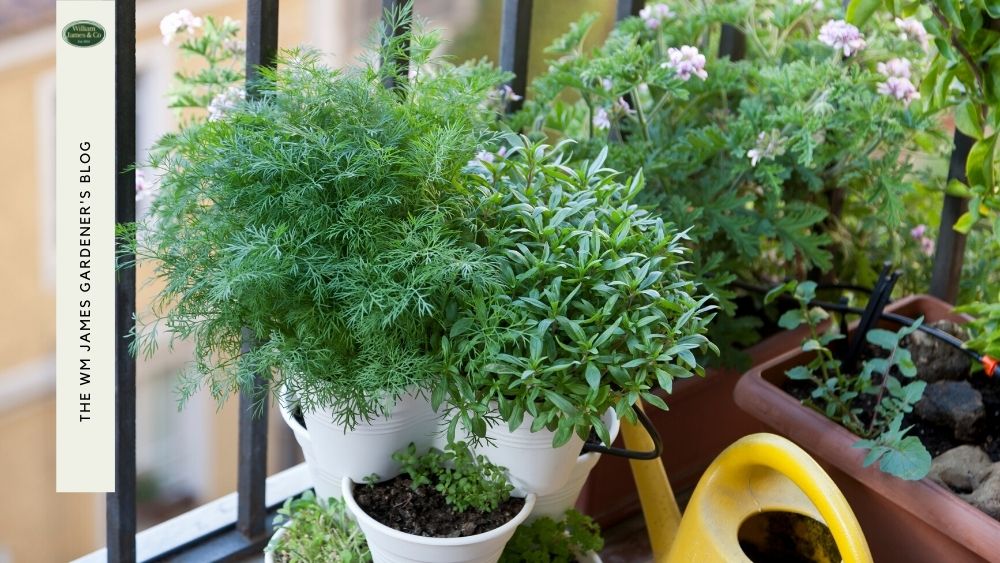
Balcony gardening is all the rage this year, and that's no surprise given they have so much potential.
For most people, balcony growing conjures up images of flowers, vegetables and herbs cascading over railings and softening the landscape of these urban areas. They are good for the environment and the grower.
However, a lot of people dismiss the idea of a balcony garden because they don’t think they have the space or the know-how to pull it off. This is not the case; a balcony garden can be as big or small as you choose and can range from a few hanging baskets to more elaborate vertical vegetable gardens.
If you are new to the concept, then the following guide can help you to start beautifying and creating a bountiful and functional space.
6 Practical Considerations for Your Balcony Garden
First things first, you need to know what direction your balcony faces. Does it face the shady north, the sunny south, or does it follow the rising or the setting of the sun in the east or the west?
This aspect is incredibly important. All plants will have their own needs in terms of sunshine, so you will need to pick varieties that work with what your balcony has to offer.
Full sun is usually considered to be a minimum of six hours of sunlight a day. If your balcony receives less than six hours of sunlight a day, you should look for plants that thrive in partial shade.
Anything less than three hours of sunlight a day is considered to be total shade. However, even in this scenario, there are still plants that will work for you.
1. How Big Will Your Balcony Garden Be?
If your balcony is relatively small, then you should think about starting small too. Eventually, you can think about implementing vertical gardening techniques to maximise wall space, but as a gardening beginner, this can be too much.
It's best to think about how much time you will have to dedicate to your garden as well as how much space you have. A few pots might do to start with, and then over time, as your confidence grows, you can add in some larger pots, containers, hanging baskets and wall pockets.
2. Is It Windy On Your Balcony?
You should be aware of any extreme conditions if you have an exposed balcony. The higher up your balcony, the more likely it is that it will be windy so plants will probably need protection. You could opt to install some trellises or windbreak netting to block these winds while also supporting any climbing vines that you have.
Wind can be drying on your plants, so you must stay on top of your watering schedule; you could also consider some self-watering techniques.
Finally, some of your houseplants might do well with a small holiday outside in the fresh air. You should always expose them gradually to a new location to avoid sun or windburn.
3. How Much Sun Does Your Space Have?
Surely the sun is good for plants? It is, but sometimes too much sun can bake your plants, especially if you have installed a screen as it ends up creating a greenhouse effect. Six to eight hours of sun is ideal but If you have concerns, then the answer is to choose drought-tolerant or sun-worshipping plants.
Some herbs do exceptionally well in the heat as well as plants like lavender which smell great too. Succulents are also a good option to add some colour and fun textures. If you have particularly thirsty plants make sure you keep a closer eye on these as they will be the first to show signs of sun damage.
4. How Cold Does It Get On Your Balcony?
Some people have the opposite problem, and their balconies are too shady. If yours faces the east or the west, it will only get direct sunlight for a few hours a day, and some north-facing balconies don’t get any direct sunlight.
However, this shouldn’t put you off.
A lot of plants prefer shadier and cooler climes. Things like lettuce and parsley are great vegetables to grow in partial shade, while begonias and ferns are great for brightening up a shadier balcony.
5. Do You Have Water Readily Available?
This is another incredibly important consideration when planning your outdoor space. Having a good watering system in place is essential, no matter the size of your garden. The question is, why do you need a watering system when you can water your plants yourself. A capillary mat is great to have on hand as it will help to hold much-needed water.
If you aren’t home much or don’t have enough spare time to water your plants as they need, then a watering system is recommended.
Your plants will need watering whether you are home or not. You can look into self-watering pots, water wicking or drip irrigation. Some techniques are easier to set up than others, and they may require some trial and error.
6. Are There Rules About Gardening On Your Balcony?
Some landlords or councils might have specific rules about what you can and can’t do on your balcony, or some even have rules and what you can and can’t grow. Make sure to check this before you begin.
However, in terms of gardening rules, there aren’t any. It comes down to personal preference; as long as you do your research to see what you can realistically grow, you can do what you like.
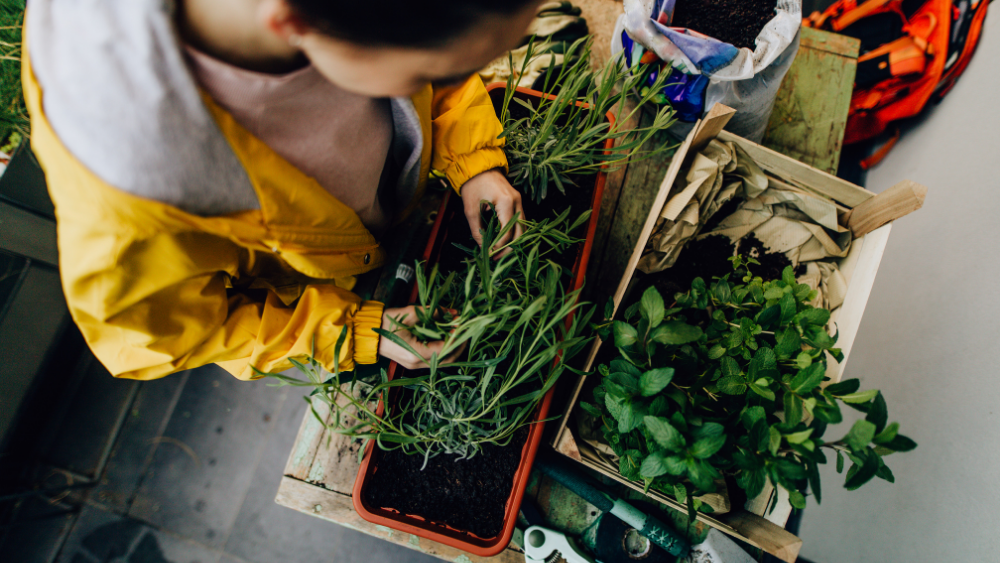
Growing Fruit & Vegetables On Your Balcony
Contrary to popular belief, you don’t need a sprawling garden or an allotment to grow fruits and vegetables. Some forms can thrive in non-traditional environments and dwarf varieties are a gardener's best friend here.
All plants and veg will have different light, water, and temperature requirements. However, it does often come down to trial and error. Pay attention, and if you see any signs of sickness, wilting or overwatering, you will need to alter your routine accordingly.
Always check the requirements before you commit to purchasing and nurturing them.

Tips For Growing A Balcony Vegetable Garden
If you're looking to do a bit of balcony vegetable gardening there are a variety of vegetables you can grow. Root vegetables, carrots and beans are some popular choices when it comes to container gardening on your balcony.
Examples of other popular vegetables that can be grown in pots on a balcony include:
- Cherry Tomatoes
- Lettuce & Leafy Greens
- Cucumbers
- Pepper Plants
- Mini Carrot Varieties
First things first, if you want to grow vegetables you need to use large planters wherever possible. They give your veg more room to take root. A deep post can help when growing vegetables like carrots whereas a wide container is great for lettuce and salad leaves.
You should also re-sow your vegetables after harvesting for a quick replacement. You’ll have new crops growing while you make your way through the batch you’ve just harvested.
You should look into growing container veg varieties that are better suited to growing with less room. These might grow small, but they will produce good crops for their size.
Lastly, always take care when feeding and watering your vegetables. Too much of either can be bad for them and in the worst case, it can kill them off. Also, ensure that your more delicate vegetables are kept out of the direct sun.
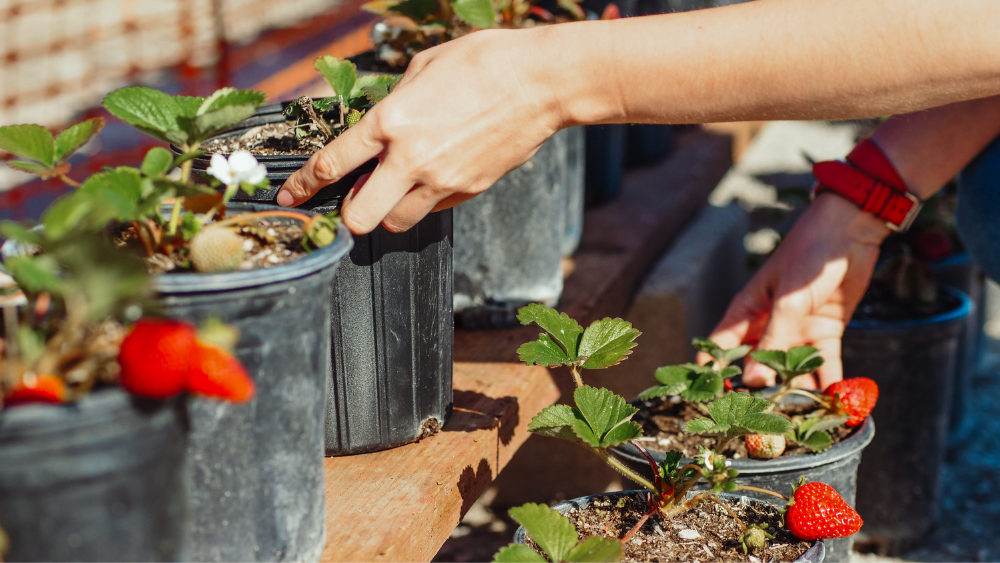
Tips For Growing Fruits On Your Balcony
It isn’t just vegetables that you can grow on your balcony. You might want to try your hand at growing some fruits too. Some varieties of fruit do really well when grown in pots like strawberries.
Examples of popular fruits grown in balcony gardens include:
- Strawberries
- Blackcurrants
- Blueberries
- Raspberries
- Figs
Good compost is important to provide structure and nutrients. Thicker, glazed or non-porous pots are needed to insulate the roots from extreme temperatures on both ends of the spectrum.
Similarly to vegetables, fruits also do well in bigger containers; remember that and ignore the temptation to grow a broad range in lots of smaller pots. Liquid feed can also be used during the summer months.
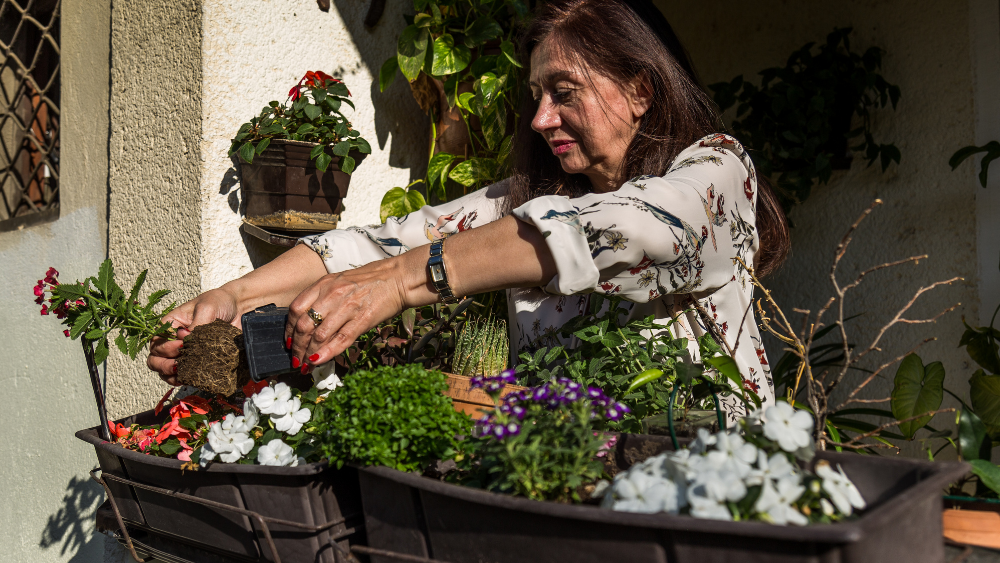
Which Plants Are Good For A Balcony Garden?
A lot of houseplants would do well having a small holiday on the balcony. In the summer months, your cacti or succulents will thrive in the heat and light of a sunny balcony. Other houseplants like ferns or philodendrons might need a little shelter from time to time.
Our top 5 plants to try growing on your balcony are:
- Lavender
- Calathea
- Succulents
- Caladium
- Hydrangea
There are also several bedding plants that you could try your hand at growing. Most of which are annuals or tender perennials, which means you can refresh your balcony displays each year. If your balcony is sunny, then coleus or zinnias will work; if your balcony is shady, then begonias and nicotianas will thrive.

Best Type of Pots To Use For A Balcony Garden
Potted plants do best on balconies and the type of pot you choose will depend mostly on two factors: what pot your plants thrive best in and how much weight your balcony can safely take.
Some large pots can be exceptionally heavy, and your balcony might not be built for it. Small pots like terracotta pots, ceramic pots and plastic pots are a great choice because they keep a lot of heat in the soil.
If you have the right structure to support them, then you could opt for some hanging planters. You can attach them to your railing or the ceiling if there is an overhang from the roof above. They will need lightweight soils and compost fit for their purpose.
Alternatively, you could opt for stacked or vertical planters, which you can affix to the walls if you have the space. It does mean more floor space, but they can be tricky to pull off.
How To Maximise Vertical Space For Your Balcony Garden
Vertical gardening could be considered the opposite of container gardening in that vertical gardens grow upwards and don't take up much floor space.
The idea is that you plant upwards instead of outwards using shelves or hanging baskets to make the most out of the space available. Growing vegetables and plants in this way are quite exciting and there are a lot of creative and frankly pretty solutions that you can use if you so desire. However, they can create a mess from water runoff, so you might also need to think about a water catchment system.
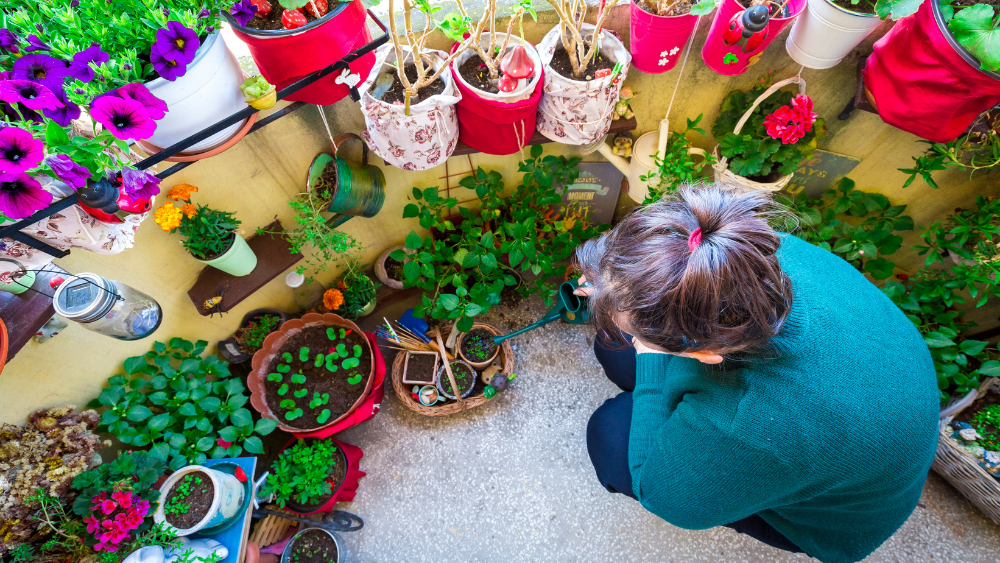
How To Keep Your Balcony Garden Healthy
We've already spoken about tips for feeding plants and the need to avoid overwatering so let’s focus on the importance of soil choice. The soil forms the foundation for the plants; it is their source of moisture and oxygen.
Look at the needs of your plants; for example, vegetables and fruits tend to prefer a richer soil with water retaining compost and added organic matter. Herbs, on the other hand, tend to prefer drier soil. Getting the soil mix right can go a long way in keeping your plants healthy.

Conclusion: Getting Started with A Balcony Garden
Do not let the idea of starting a balcony garden intimidate you. It might be a bit of work initially, but once it is up and running, it does require less input from you. Big pots, small pots, containers and hanging baskets are just some of the ways you can liven up a small balcony garden.
You might not be able to grow a huge variety of plants, but you can certainly grow enough to make a difference.
Balcony gardens are a great way to connect with nature and do your bit for the environment. Take good care of them and they will take good care of you!











